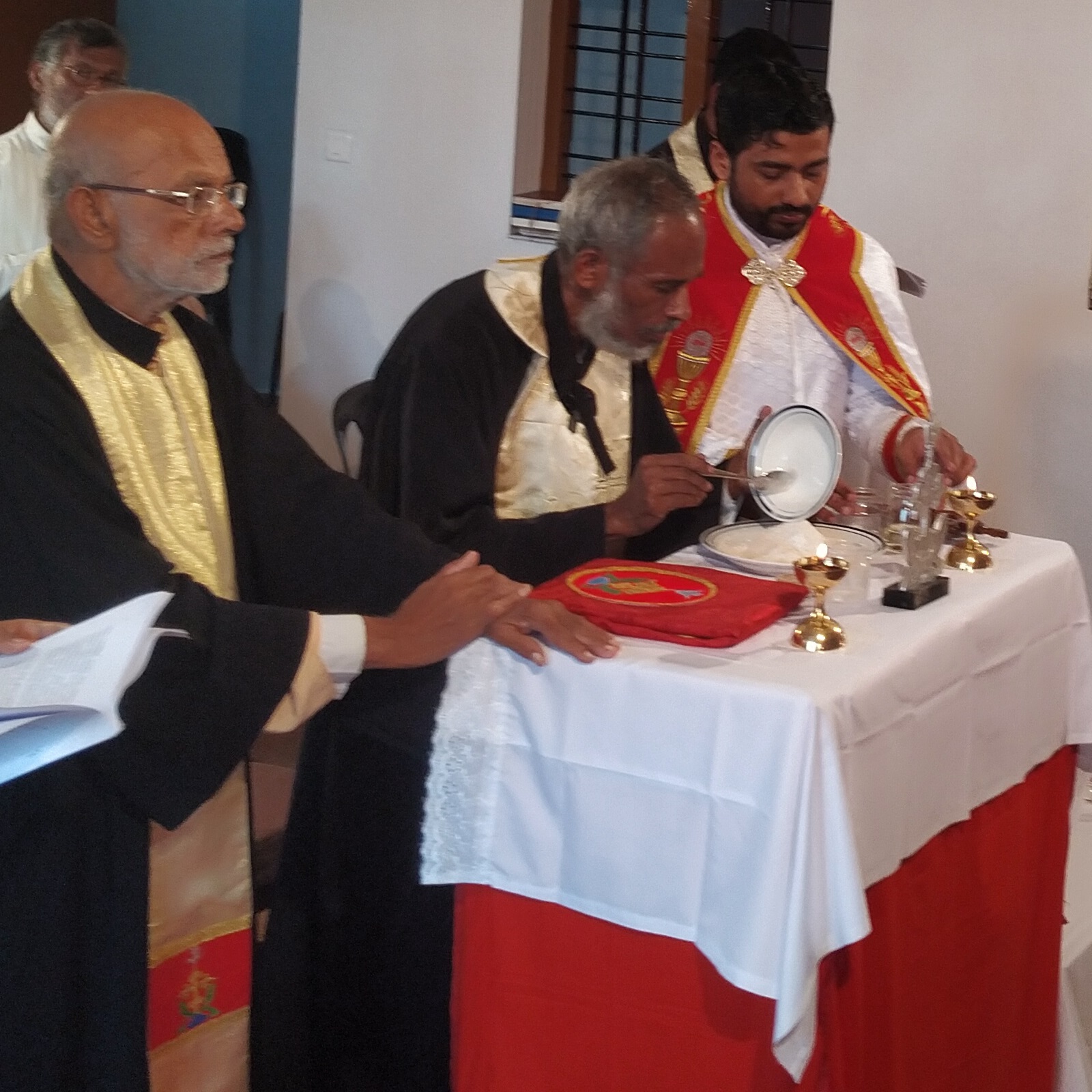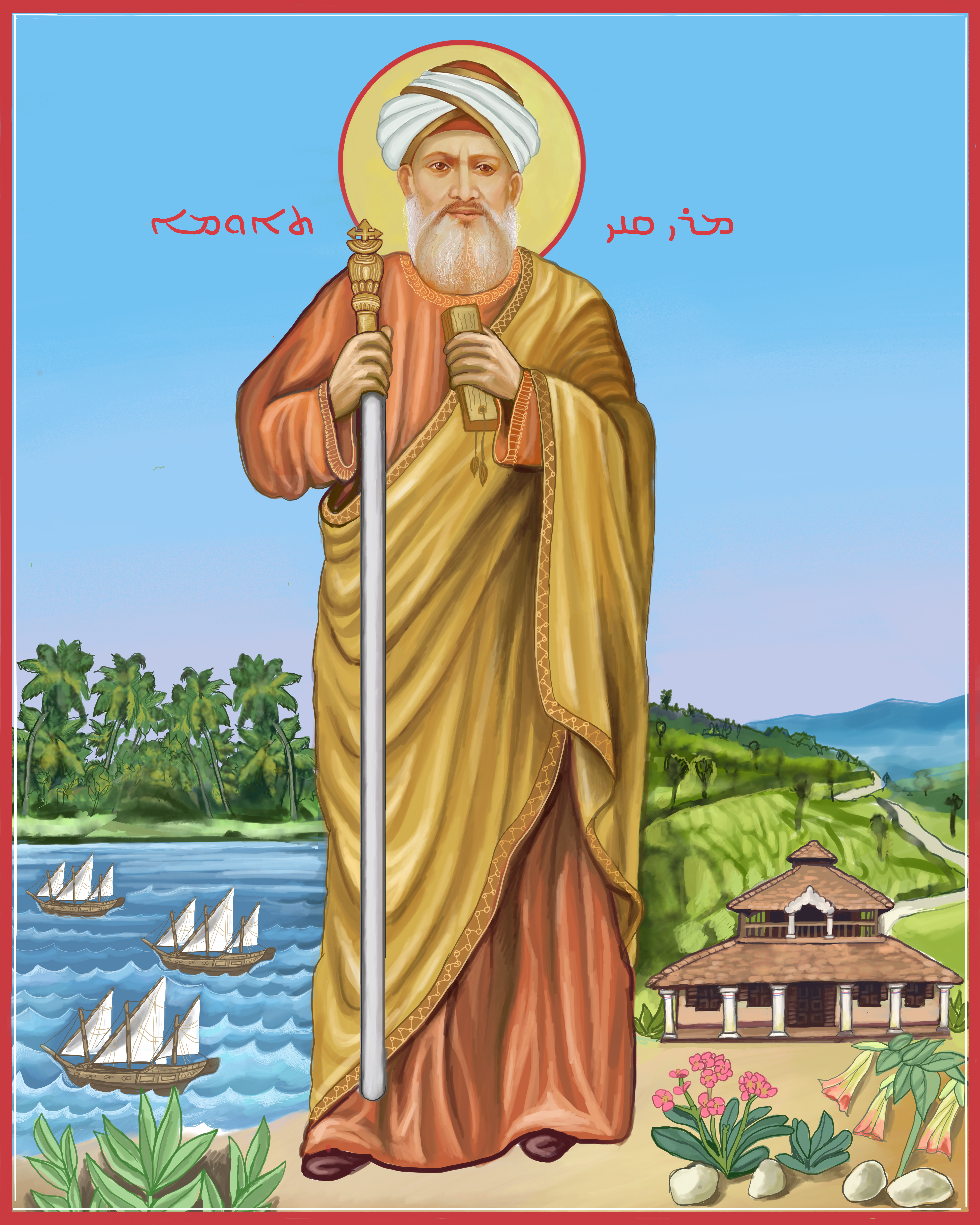|
Liturgical Calendar Of The Syro-Malabar Catholic Church
The Syro-Malabar Church is a Catholic Church ''sui iuris'' of the East Syriac Rite that adheres to the following calendar for the church's liturgical year. Like other liturgical calendars, the Syro-Malabar calendar loosely follows the sequence of pivotal events in the life of Jesus. Liturgical seasons The Syro-Malabar liturgical year opens with the season of Annunciation, which begins on the Sunday between November 27 and December 3. This day corresponds to the First Sunday of Advent in the Western Roman Rite tradition. The liturgical year is divided into the following nine seasons. Although the eighth season (Elijah–Cross–Moses) is considered one of the nine, it is also regarded as a combination of the three distinct seasons that are named (Elijah, Cross, and Moses). Holy days of obligation In the Syro-Malabar Church, there are 6 holy days of obligation: # Epiphany (January 6) # Sts. Peter and Paul (June 29) # The Ascension of Our Lord (sixth Thursday after Easter) ... [...More Info...] [...Related Items...] OR: [Wikipedia] [Google] [Baidu] |
Syro-Malabar Church
lat, Ecclesia Syrorum-Malabarensium mal, മലബാറിലെ സുറിയാനി സഭ , native_name_lang=, image = St. Thomas' Cross (Chennai, St. Thomas Mount).jpg , caption = The Mar Thoma Nasrani Sliva or Saint Thomas christian cross, the symbol of the Syro-Malabar Church. , abbreviation=SMC, type = Self-governing church (''sui iuris'') , main_classification = Eastern Catholic , orientation = Eastern Christianity(Syriac Christianity) , scripture = , polity = Episcopal polity , governance=Holy Episcopal Synod of the Syro-Malabar Church, theology = East Syriac theology , leader_title = Pope , leader_name = Francis , leader_title1 = Major Archbishop , leader_name1 = George Alencherry , leader_title3 = Administration , leader_name3 = Major Archiepiscopal Curia , area = India and Nasrani Malayali diaspora , fou ... [...More Info...] [...Related Items...] OR: [Wikipedia] [Google] [Baidu] |
Easter
Easter,Traditional names for the feast in English are "Easter Day", as in the '' Book of Common Prayer''; "Easter Sunday", used by James Ussher''The Whole Works of the Most Rev. James Ussher, Volume 4'') and Samuel Pepys''The Diary of Samuel Pepys, Volume 2'') as well as the single word "Easter" in books printed i157515841586 also called Pascha (Aramaic, Greek, Latin) or Resurrection Sunday, is a Christian festival and cultural holiday commemorating the resurrection of Jesus from the dead, described in the New Testament as having occurred on the third day of his burial following his crucifixion by the Romans at Calvary . It is the culmination of the Passion of Jesus Christ, preceded by Lent (or Great Lent), a 40-day period of fasting, prayer, and penance. Easter-observing Christians commonly refer to the week before Easter as Holy Week, which in Western Christianity begins on Palm Sunday (marking the entrance of Jesus in Jerusalem), includes Spy Wednesday (on whic ... [...More Info...] [...Related Items...] OR: [Wikipedia] [Google] [Baidu] |
Syro-Malabar Catholic Church
lat, Ecclesia Syrorum-Malabarensium mal, മലബാറിലെ സുറിയാനി സഭ , native_name_lang=, image = St. Thomas' Cross (Chennai, St. Thomas Mount).jpg , caption = The Mar Thoma Nasrani Sliva or Saint Thomas christian cross, the symbol of the Syro-Malabar Church. , abbreviation=SMC, type = Catholic particular churches and liturgical rites, Self-governing church (''sui iuris'') , main_classification = Eastern Catholic , orientation = Eastern Christianity(Syriac Christianity) , scripture = , polity = Episcopal polity , governance=Holy Episcopal Synod of the Syro-Malabar Church, theology = East Syriac theology , leader_title = Pope , leader_name = Pope Francis, Francis , leader_title1 = Major Archbishop , leader_name1 = George Alencherry , leader_title3 = Administration , leader_name3 = Major Archiepiscopal Curia , ... [...More Info...] [...Related Items...] OR: [Wikipedia] [Google] [Baidu] |
Syro-Malankara Catholic Church
The Syro-Malankara Catholic Church, also known as the Malankara Syrian Catholic Church, is an Eastern Catholic '' sui iuris'' particular church in full communion with the worldwide Catholic Church possessing self-governance under the Code of Canons of the Eastern Churches. It is one of the major archiepiscopal churches of the Catholic Church. It is headed by Major Archbishop Baselios Cardinal Cleemis Catholicos of the Major Archdiocese of Trivandrum based in Kerala, India. The Malankara Syrian Catholic Church traces its origins to the missions of Thomas the Apostle in the 1st century.George Menachery (1973) The St. Thomas Christian Encyclopedia of India, Ed. George Menachery, B.N.K. Press, vol. 2, , Lib. Cong. Cat. Card. No. 73-905568; B.N.K. Press – (has some 70 lengthy articles by different experts on the origins, development, history, culture... of these Christians, with some 300 odd photographs).Leslie Brown, (1956) The Indian Christians of St. Thomas. An Account o ... [...More Info...] [...Related Items...] OR: [Wikipedia] [Google] [Baidu] |
Knanaya
The Knānāya, (from Syriac: ''Knā'nāya'' (Canaanite)) also known as the Southists or Tekkumbhagar, are an endogamous ethnic group found among the Saint Thomas Christian community of Kerala, India. They are differentiated from another part of the community, known in this context as the Northists (''Vaddakkumbhagar''). There are about 300,000 Knanaya in India and elsewhere. The origins of the Knanaya community is traced back to the arrival of the Syriac merchant Thomas of Cana (Knāi Thoma) who led a migration of Syriac Christians ( Jewish-Christians) from the Mesopotamian province of Sassanian Persia to India in the fourth or eighth century. The communities arrival was recorded on the Thomas of Cana copper plates which were extant in Kerala until the 17th century. The ethnic division between the Knanaya and other St. Thomas Christians was observed during the Portuguese colonization of India in the 16th century and was noted throughout the European colonial era. Today, the majo ... [...More Info...] [...Related Items...] OR: [Wikipedia] [Google] [Baidu] |
Saint Thomas Christians
The Saint Thomas Christians, also called Syrian Christians of India, ''Marthoma Suriyani Nasrani'', ''Malankara Nasrani'', or ''Nasrani Mappila'', are an ethno-religious An ethnoreligious group (or an ethno-religious group) is a grouping of people who are unified by a common religious and ethnic background. Furthermore, the term ethno-religious group, along with ethno-regional and ethno-linguistic groups, is a s ... community of Indian Christians in the state of Kerala (Malabar region), who, for the most part, employ the East Syriac Rite, Eastern and West Syriac Rite, Western liturgical rites of Syriac Christianity. They trace their origins to the evangelistic activity of Thomas the Apostle in the 1st century. The Saint Thomas Christians had been historically a part of the hierarchy of the Church of the East but are now divided into several different Eastern Catholic Church, Eastern Catholic, Oriental Orthodoxy, Oriental Orthodox, Protestantism, Protestant, and independent ... [...More Info...] [...Related Items...] OR: [Wikipedia] [Google] [Baidu] |
Holy Day Of Obligation
In the Catholic Church, holy days of obligation are days on which the faithful are expected to attend Mass, and engage in rest from work and recreation (id est, they are to refrain from engaging in work or activities that hinder the worship owed to God), according to the third Commandment. The expectation is attached to the holy day, even if transferred to another date, as sometimes happens in the Roman Rite. However, in some countries a dispensation is granted in such circumstances. Latin Church The holy days of obligation for Latin Church Catholics are indicated in canon 1246 of the 1983 Code of Canon Law: Placed in the order of the liturgical calendar, the ten days (apart from Sundays) that this canon mentions are: *8 December: Solemnity of the Immaculate Conception of the Blessed Virgin Mary *25 December: Solemnity of the Nativity of the Lord (Christmas) *1 January: Solemnity of Mary, the Holy Mother of God *6 January: Solemnity of the Epiphany of the Lord *19 March: ... [...More Info...] [...Related Items...] OR: [Wikipedia] [Google] [Baidu] |
Season Of The Dedication Of The Church
A season is a division of the year based on changes in weather, ecology, and the number of daylight hours in a given region. On Earth, seasons are the result of the axial parallelism of Earth's tilted orbit around the Sun. In temperate and polar regions, the seasons are marked by changes in the intensity of sunlight that reaches the Earth's surface, variations of which may cause animals to undergo hibernation or to migrate, and plants to be dormant. Various cultures define the number and nature of seasons based on regional variations, and as such there are a number of both modern and historical cultures whose number of seasons varies. The Northern Hemisphere experiences most direct sunlight during May, June, and July, as the hemisphere faces the Sun. The same is true of the Southern Hemisphere in November, December, and January. It is Earth's axial tilt that causes the Sun to be higher in the sky during the summer months, which increases the solar flux. However, due to seas ... [...More Info...] [...Related Items...] OR: [Wikipedia] [Google] [Baidu] |
Season Of Summer (liturgy)
The Season of Summer (also known by various Syriac transliterations such as Kaitha or Qaita) is a liturgical season in the East Syriac Rite of Christianity. The season begins on the seventh Sunday after Pentecost (just after the conclusion of the Season of Apostles) and continues for seven weeks. The Season of Summer has a theme of spiritual harvest, reflecting on the fruits of the missionary labors of the Apostles An apostle (), in its literal sense, is an emissary, from Ancient Greek ἀπόστολος (''apóstolos''), literally "one who is sent off", from the verb ἀποστέλλειν (''apostéllein''), "to send off". The purpose of such sending .... Fridays of Summer The Fridays of various weeks of this liturgical season are dedicated to various martyrs. * First Friday of Summer: St. James of Nisibis * Second Friday of Summer: St. Mari * Fifth Friday of Summer: St. Simoni and seven sons * Sixth Sunday of Summer: St. Simon Barsaba and co-martyrs Reference ... [...More Info...] [...Related Items...] OR: [Wikipedia] [Google] [Baidu] |
Pentecost
Pentecost (also called Whit Sunday, Whitsunday or Whitsun) is a Christianity, Christian holiday which takes place on the 50th day (the seventh Sunday) after Easter Sunday. It commemorates the descent of the Holy Spirit upon the Apostles in the New Testament, Apostles and other followers of Jesus Christ while they were in Jerusalem during the Second Temple Period, Jerusalem celebrating the Feast of Weeks, as described in the Acts of the Apostles (Acts 2:1–31). In Western Christianity, Pentecost is celebrated on the 50th day (the seventh Sunday) after Easter Sunday. In the United Kingdom, traditionally the next day, Whit Monday, was (until 1970) also a public holiday. (Since 1971, by statute, the last Monday in May has been a Bank Holiday). The Monday after Pentecost is a legal holiday in many European countries. In Eastern Christianity, Pentecost can also refer to the entire fifty days of Easter through Pentecost inclusive; hence the book containing the liturgical texts is calle ... [...More Info...] [...Related Items...] OR: [Wikipedia] [Google] [Baidu] |
Season Of Apostles
The Season of Apostles (also known by various Syriac transliterations, such as Slihe and Shleehe) is a liturgical season in East Syriac Christianity. The season begins with the feast of Pentecost and continues for seven weeks. It is followed by the Season of Summer. The season is so named because it commemorates the missionary activities of the apostles of Jesus after the events of Pentecost. The following feasts are fixed to certain days in the Season of Apostles: * Friday after Pentecost: Friday of Gold * Sunday after Pentecost: The Holy Trinity * Thursday after the Second Sunday of Apostles: The Body and Blood of Christ * Friday after the Third Sunday of Apostles: Sacred Heart of Jesus * Saturday after the Third Sunday of Apostles: Immaculate Heart of Mary * Friday after the Seventh Sunday of Apostles: The Seventy Disciples of Jesus The season ends with the Feast of the Twelve Apostles on the First Sunday of Summer. See also * Pentecost season Pentecost season, also kn ... [...More Info...] [...Related Items...] OR: [Wikipedia] [Google] [Baidu] |







